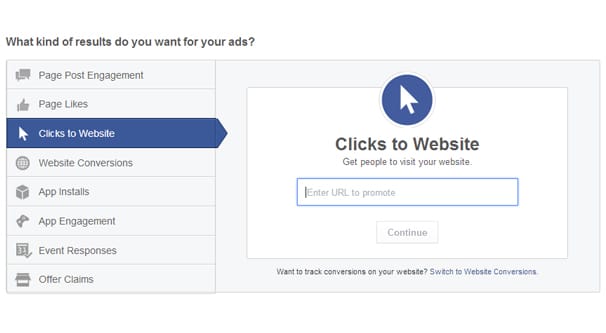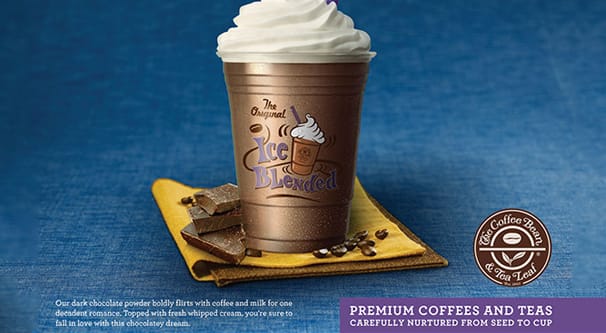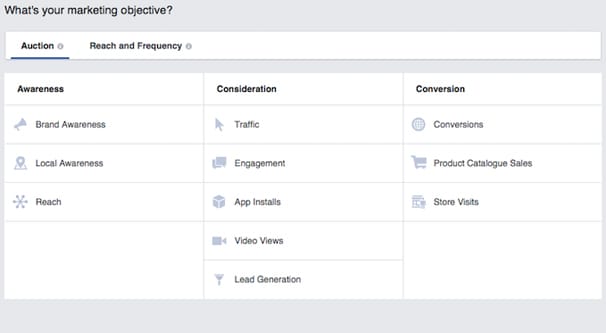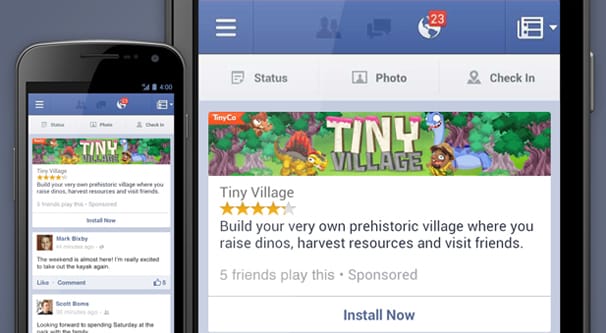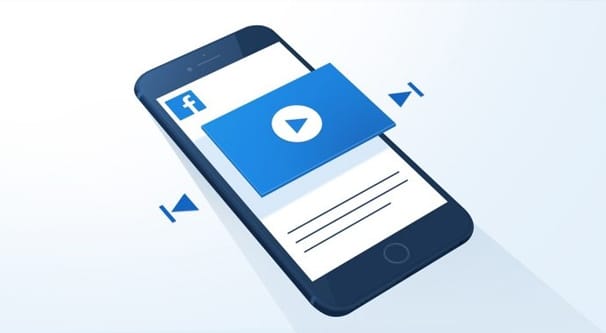 Written by ContentPowered.com
Written by ContentPowered.com
Before going and digging into any form of online advertising, you really need to figure out what your goal is going to be. What do you want to get out of the advertising you’re going to pay for? Only by knowing your goal ahead of time can you properly configure your ads, and only with goal knowledge can you track the relevant metrics that determine if an ad is effective.
It’s worth noting before we begin that the goal of your ads is not the same as the ad objective you set in Facebook. The two are very closely linked, but only in the sense that you need to know your goal in order to pick the right kind of ad objective.
Possible Ad Goals
There are only a few possible types of advertising goal. The number one, obviously, is more sales. When you think about it, though, aren’t all ads just trying to get you more sales, in whatever a roundabout way they use? Every single ad objective, eventually, can be traced back to the desire to sell more. Therefore, “selling more products” or, more simply, “more conversions” is not necessarily a good ad goal.
What’s important to think about is how you want to sell more products. What specific action can your ads facilitate, that can lead to more sales? Here are some ideas.
- Increase customer engagement. When your customers are more engaged with your brand, they’ll trust your brand more, and you will be foremost in their thoughts when they think about the products you sell. When it comes time to buy a specific product, their past history of engagement with your brand makes them more likely to opt for your product rather than a competitors.
- Generate new leads for your sales team. Facebook leads do not have to be funneled directly to your store page, reliant on your landing page and sales copy to convert. Many types of Facebook ads can generate leads. Leads then become part of your sales funnel, where they can be exposed to various types of marketing, from sales calls to email drip campaigns.
- Increase broad-spectrum brand awareness. You can’t buy a product from a company you’ve never heard of, right? Ads can be a great way to simply put your brand name into the public consciousness, so that more people are aware you’re an option. The more people aware of your brand, the more who can convert or can mention you to others who might be interested.
On the other hand, there are a lot of “specific” ad goals on Facebook that aren’t actually ad goals.
- Indiscriminate website clicks. Not to be confused with an awareness campaign, it’s easy to pay a few bucks for a thousand clicks to your website. If you have no filtering, no targeting, however, those clicks are essentially worthless. You might as well consider your ad a trickle-style donation to Facebook.
- Ad impressions. Without the specific goal of an awareness campaign, and all of the associated techniques you can use in targeting and copy, ad impressions are valueless. Take 1,000 business cards and drop them on the sidewalk; some people will see them, but no one will care.
So, before you run Facebook ads, you need to figure out what your goal is with those specific ads. Are you driving an awareness campaign about a holiday sale? Are you looking to get deeper customer engagement? Are you trying to sell directly through Facebook?
Now let’s look at the various Facebook ad campaign objectives, and how you might use each one of them.
Ad Objectives for Facebook Campaigns
Ad objectives are important on Facebook, because they change how your ads function on a mechanical level, as well as changing the ordering of how Facebook displays your ads.
First of all, Facebook maintains a sort of “action profile” for everyone on the platform. If one person sees but never clicks on ads, there’s a pretty low chance they’re going to click on future ads. This person will preferentially be shown awareness-style ads where an impression is the goal, rather than a click or an opt-in. Meanwhile, if another person has frequently installed apps they see via Facebook ads, that person is more likely to be shown ads with an app install objective, since it’s an action they’ve been proven to take.
Secondly, as you might imagine, changing your ad objective changes the behavior of the ad when it is clicked. An ad that has a website click objective will only lead to that website when clicked. Simple enough, right? Well, an app install ad isn’t going to lead to a website; it’s going to lead to a storefront for the app, where the user will be able to download directly. An awareness ad might not even have a link, it might just be a Facebook post you paid to give extra circulation.
Also, since Facebook and Instagram run on the same ads manager, it’s worth noting that certain kinds of ads only work on Facebook, while others work on both platforms. I’m not going to go into detail about them, since Instagram isn’t the focus, but you can apply most of this information to any other ad network you want to use in general, and to Instagram in specific, if you so desire.
Facebook divides their ad objectives into three main categories. I somewhat disagree with their division and think there’s really only two, but in the interests of matching terminology with what Facebook already uses, I’m going to stick with their definitions.
The three objectives are Awareness, Consideration, and Conversion.
Awareness Objectives
Awareness objectives on Facebook are objectives that fit with out “brand awareness” goal. There are only two kinds of ads that fall under this category; brand awareness and reach.
Brand Awareness ads are ads aimed at getting as much exposure to your content as possible, as cheaply as possible, with no further goal.
You would want to use brand awareness ads when your goal is to get as much exposure as possible, where you don’t care about anything beyond that exposure. For example, Nike might have a new line of shoes they want to promote; they can run an awareness campaign to let their fans know of their new line. A new brand opening up into an existing marketing niche might want to use awareness to get their name out and circulating.
Reach ads are similar, except they have a focus on exposure specifically on the Facebook platform. Rather than trying to promote a website link, they tend to promote a post or an account.
You would want to use reach ads when your ad goal is to get more people into your Facebook audience, or to get more people in your existing Facebook audience to be aware of something new you’re doing. It’s well known that Facebook posts typically only reach 5% or so of your existing audience; if you want to reach the other 95%, reach ads can help.
In both cases, these ads are good at getting awareness of your brand or your topic out in circulation, but they will likely result in few if any website clicks or direct conversions.
Consideration Objectives
Facebook’s split between awareness and consideration seems minor to me, but hey, it is what it is. Consideration ads are focused on more direct attention and specific actions that are NOT specific conversions. Except, what counts as a conversion? According to Facebook, a conversion is specifically a sale through a store. Something like an app install does not count as a conversion.
There are six kinds of consideration objectives; traffic, app installs, engagement, video views, lead generation, and messages. They’re all aimed at getting the user to take a specific action other than making a purchase.
Traffic ads are some of the most common ads on Facebook and are the most typical kind of ad across the internet. Their entire goal is to get people to click through to your website or app.
You would want to use the traffic objective when you want people to visit your website, and you trust the advertising copy on your website to do the selling for you. They’re ideal for exposure to your landing pages, particularly when you have an opt-in objective for potential customers. They’re optimized to lead people to your site, not to result in conversions, so you need to pay attention to the differences in cost per conversion between traffic and sales ads.
App install ads are ads focused on sending people to an app store page, either the Google Play or Apple app stores generally depending on device. In my mind, these could be a conversion ad as well, if you’re trying to get people to download your app as your method of conversion.
Obviously enough, these are the ideal ads to use if you want people to download your app. The ad itself should be focused on selling the app, making them one of the more conversion-focused kinds of consideration ads.
Engagement ads are aimed at getting people to engage with your Facebook posts in some way. These ads come in different flavors; ads to get more engagement on specific posts, ads to get people to claim offers, ads to get more event RSVPs, and ads to get more likes on your page.
When should you use engagement ads? I consider them closer to an awareness ad in general. You want to build awareness of your brand and grow your audience, so you use an engagement ad focused on page likes. You want to get more people to attend your event, so you run engagement ads to your event to build awareness.
Video view ads are, as you might expect, focused on getting people to watch your videos. Video ads have some of the highest engagement of any ad type on Facebook, and videos themselves can be very flexible in their objective. The downside, of course, is that the ad is just a video post; there’s no click through objective tied to it, so you have to be able to track referral data manually.
When should you use video view ads? Whenever you have a video hosted on Facebook you want to get more exposure. Generally, I consider these to be awareness ads as well, since all you’re doing is building awareness for the video. It’s up to the video and the description to forward people on to another objective.
Lead generation ads are ads that have specific data harvesting as their objective. We’re not talking Cambridge Analytica data harvesting here, just simple email or phone number information. If you rely on outbound marketing like a newsletter or sales calls to make your sales, lead generation ads are the ideal goal to get more of that kind of information.
When do you use lead generation ads? As you might expect, the ideal time to use them is when you have a system set up to make use of that information. If you don’t have a sales team reaching out to customers, you aren’t going to be able to make great use of lead information.
Messages ads are a Facebook-specific kind of ad that encourages people to contact your business through Facebook’s Messenger app. It’s a sort of lead generation where the method of contact is through Messenger. Obviously, you should only use these if you’re prepared to use messenger to communicate with leads.
Conversion Objectives
The final type of objective on Facebook is conversions. These ads are aimed at getting people to make the action necessary to convert, whatever that action may be. They come in three varieties; conversions, catalog sales, and store visits.
Conversion ads are the most typical kinds of ads. They make use of the Facebook pixel to track user actions on your site up to the moment where they convert. A conversion can be anything from opting in to a form, downloading an app, or making a purchase, so these are very flexible ads.
When should you use them? Well, when nothing else quite fits. These are a sort of catch-all conversion ad when other more focused ads don’t quite work.
Catalog sales ads are ads focused on getting people to purchase through a Facebook-enabled catalog. Also known as dynamic ads, they can adapt a selection of products to the type of person seeing the ad, though you rely on Facebook’s systems to pick. They can be very flexible and useful, but require you to have a whole catalog of different products with the associated Facebook meta data for each one.
Finally, store visits ads are an ad format focused on local businesses with physical locations. They’re aimed at promoting a local retail outlet or other business to people who are geographically local or traveling. This means they’re ideal for capturing foot traffic, and not much else.
Make sure to pick the right objective to go with the goal you have for your ads.
